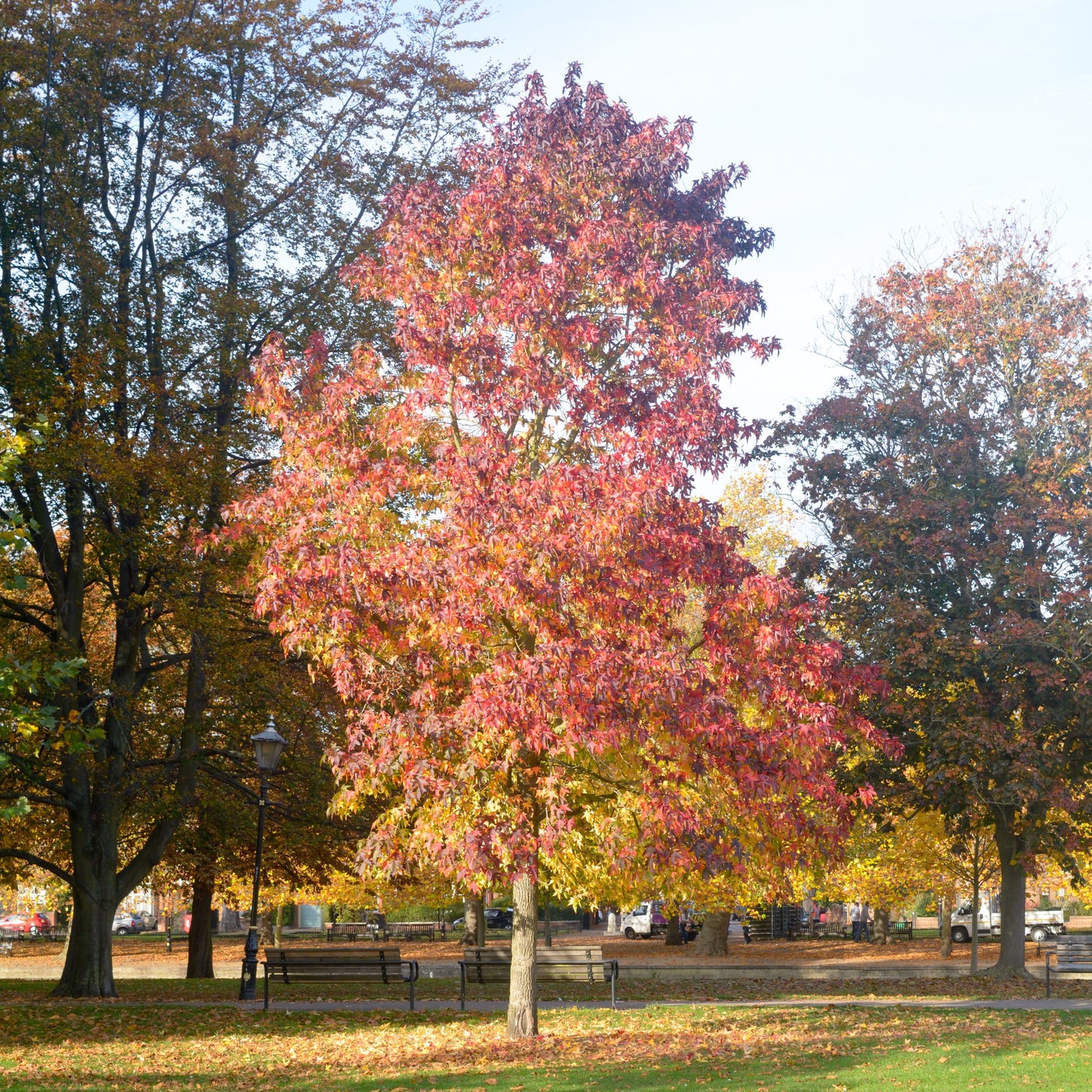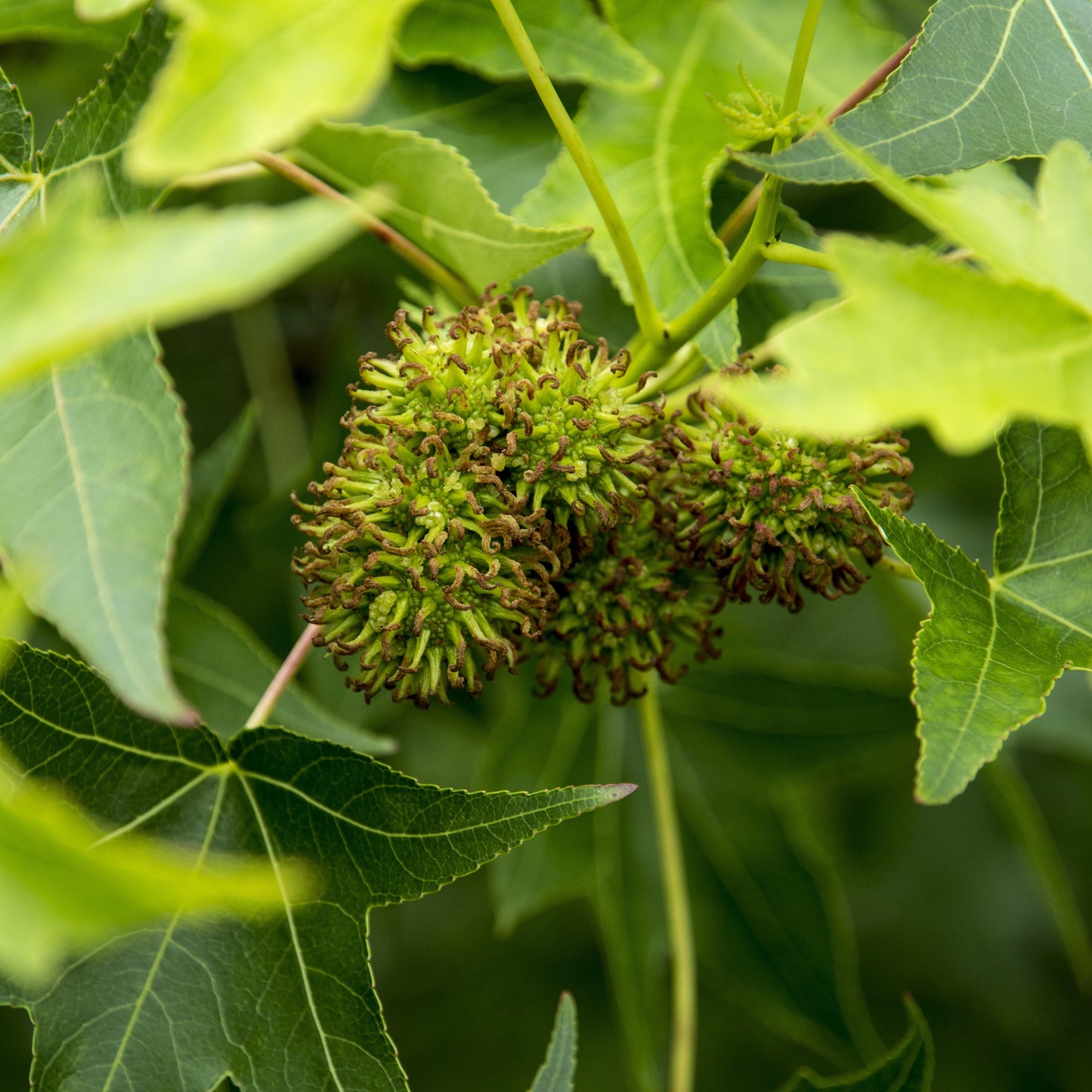Limited Quantities - Reserve Now For Fall
American Sweetgum Tree
American Sweetgum Tree
Couldn't load pickup availability
Liquidambar styraciflua
Sweetgum Tree
The American Sweetgum Tree is a fast-growing, long-lived deciduous tree prized for its brilliant fall foliage, unique star-shaped leaves, and strong adaptability. With its deep-rooted history in North America, this resilient and low-maintenance tree provides excellent shade, erosion control, and vibrant seasonal color. Whether used in urban landscapes, large yards, or parks, the Sweetgum is a valuable tree for both aesthetic appeal and environmental benefits.
Sweetgum Tree - Overview
| Attribute | Details |
|---|---|
| Variety | Rooted |
| Botanical Name | Liquidambar styraciflua |
| Common Names | Sweetgum, Redgum, Alligatorwood, Bilsted |
| Mature Height | 60-80 feet |
| Mature Width | 40-60 feet |
| Growth Rate | Moderate to Fast (1.5-3 feet per year) |
| Lifespan | 100-150 years |
| USDA Hardiness Zones | 5-9 |
| Sun Preference | Full sun (6+ hours of direct sunlight) |
| Soil Type | Well-drained, loamy, sandy, or clay soils |
| Soil pH | Slightly acidic to neutral (5.0-7.5) |
| Water Needs | Moderate; prefers moist soils but can tolerate drought once established |
| Fall Foliage | Deep red, purple, orange, and yellow |
| Wildlife Attraction | Birds, pollinators, small mammals |
| Growth Habit | Upright, pyramidal shape when young, becoming more rounded with age |
| Self-Pollinating? | Yes |
| Landscape Uses | Shade tree, street tree, erosion control, ornamental planting, urban landscaping |
| Maintenance Level | Moderate |
Environmental Benefits
🍂 Brilliant Fall Color – Offers one of the most striking autumn displays, with deep red, orange, and yellow foliage.
🐦 Wildlife Habitat – Produces spiky seed pods that provide food for birds and small mammals.
🌳 Carbon Sequestration & Air Purification – Absorbs carbon dioxide and pollutants, making it a great addition to urban environments.
💧 Erosion Control & Soil Stabilization – Deep root system prevents soil erosion, making it ideal for riverbanks and sloped landscapes.
Pros & Cons
| Pros | Cons |
|---|---|
| Fast-growing and provides excellent shade | Spiky seed pods ("gumballs") can be messy |
| Stunning multi-colored fall foliage | Surface roots can lift sidewalks if planted too close |
| Highly adaptable to different soils and climates | Requires ample space to grow |
| Drought-tolerant once established | Hard wood can be challenging to prune |
| Attracts wildlife and pollinators | Not ideal for small yards due to large size |
Planting & Care Guide
- Spacing: Plant 40-60 feet apart for full canopy development
- Soaking: Soak roots in water for 6-12 hours before planting
- Planting Depth: Dig a hole twice the width of the root system, ensuring roots are level with the soil surface
- Mulching: Apply a 2-3 inch layer of mulch to retain moisture and suppress weeds
- Pruning: Prune in late winter or early spring to shape the tree and remove weak branches
- Fertilization: Apply a slow-release fertilizer in early spring to encourage healthy growth
- Watering: Water regularly during the first year, then reduce as the tree matures
The Sweetgum Tree is a stunning, shade-providing tree that offers seasonal beauty, wildlife support, and strong environmental benefits. Whether planted as a shade tree, ornamental feature, or erosion controller, this fast-growing and low-maintenance tree is a valuable addition to any outdoor space.
Share




